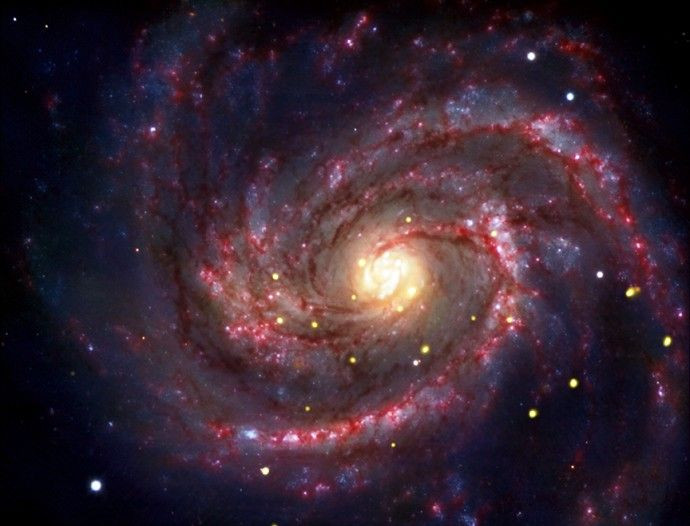Astronomers See First Evidence For Black Holes In Supernovas

Astronomers poring over data from NASA's Chandra X-Ray Observatory have found the first direct evidence that black holes are formed in supernovas.
Black holes are objects that are so massive that their gravity can prevent everything -- even light -- from escaping. Scientists theorize that most black holes form when a massive star runs out of nuclear fuel. At that point the star's internal pressure can no longer prevent it from collapsing in on itself due to its own mass.
When a star collapses, the core falls in on itself and the outer layers of the star are blown off in a massive explosion called a supernova. Supernovas are bright enough that they can outshine the galaxies they are in for weeks at a time.
After a supernova explosion, stars that are more massive than the sun become neutron stars, and stars that are more than three to four times the sun's mass become black holes. (The sun will eventually become a white dwarf star).
While astronomers understand how black holes form, nobody had ever observed it actually happening in the wake of a supernova until now. That makes this discovery the youngest black hole ever spotted.
Daniel Patnaude, an astrophysicist and one of the science operations team for the Chandra observatory, said the problem with the existing theory was that no black hole candidates had been seen with the remnants of a supernova. If a star went supernova recently -- within the last million years or so -- the black hole should be surrounded by a nebula, marking where the remains of the parent star were.
This time, the team pointed the Chandra telescope, which orbits the Earth, at a supernova called 1979C, in the galaxy M100, which is some 50 million light years distant. The supernova was originally observed in 1979 (hence the name) and Patnaude said that returning to it was one way of seeing whether it was still bright in the X-ray part of the spectrum.
The X-ray brightness of the supernova remnant, Patnaude said, mean that there are two possibilities. One is that it is a black hole, and the other that it is a very young, rapidly rotating neutron star called a pulsar. The fact that the remnant's brightness did not drop over time, but was relatively constant, points to a black hole.
Black holes give off X-rays as matter falls into them. As gas and dust falls towards the black hole's event horizon -- the point of no return -- it picks up so much speed and energy that it emits energetic radiation. It was the emission of X-rays that led to the discovery of the first black hole candidates in the 1960s.
The Chandra observatory is the only one that can see X-rays, because the Earth's atmosphere blocks that kind of radiation. NASA says it will keep the satellite operating for another 10 years if it continues functioning.
© Copyright IBTimes 2024. All rights reserved.





















